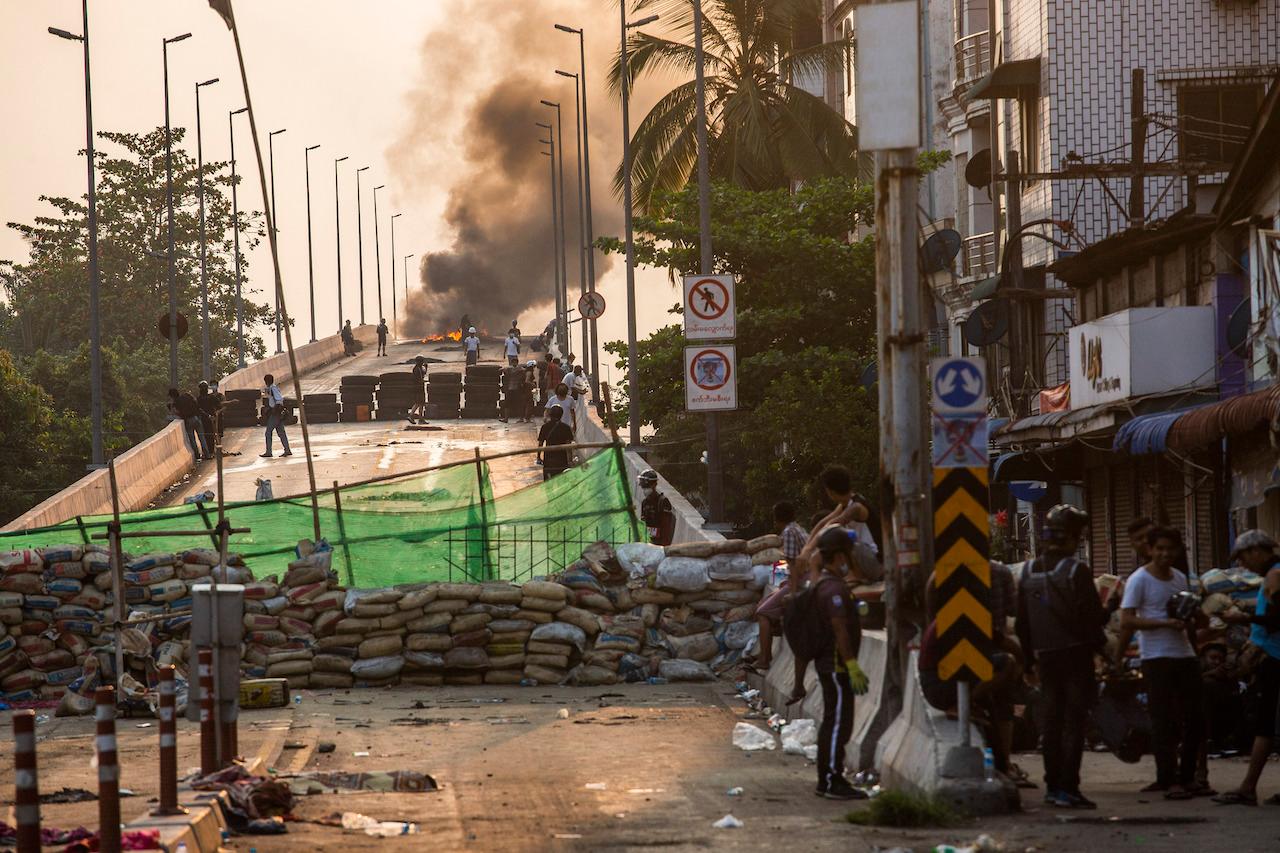Teen shot in Myanmar protest crossfire fights for life
Her doctor says she was not even in the protest but had been going to buy vegetables when security forces shot her from a distance.
A 16-year-old girl’s life hung in the balance on Wednesday, after she was caught in the crossfire of a crackdown on Myanmar protests, and her parents risked arrest in a frantic bid to get her to hospital.
The country has been in uproar since the military ousted civilian leader Aung San Suu Kyi in a Feb 1 coup, triggering a mass uprising that has brought hundreds of thousands to the streets demanding a return to democracy.
But as authorities increasingly turn to lethal means to quash dissent, more and more civilians and bystanders are dying from bullet wounds.
The latest casualty was a girl known by the pseudonym Ngwe Oo, in Wundwin, a remote town in central Mandalay region, who was on her way to the market when a rubber bullet felled her on Tuesday.
“She was going to buy vegetables, but then the security forces shot her from a distance,” a doctor told AFP Wednesday.
“She was not even in the protest.”
What ensued was a frantic six-hour journey to get Ngwe Oo to a hospital, her doctor said – detailing a stricken healthcare system, driving despite a junta-imposed curfew, and a lack of trust in military-aligned services.
Her parents initially took her to a charity-run clinic, which bandaged her head but pronounced her wounds too serious.
Then they went to the town’s hospital, where staff said they did not have the capability to treat Ngwe Oo and referred them to the nearest military hospital in Pyin Oo Lwin – about three hours away.
Doctor La Min, who declined to give his real name for fear of repercussions from the authorities, told AFP the girl’s parents were in despair.
The junta has repeatedly said military-run hospitals are an option for civilians – but Ngwe Oo’s parents were terrified of army-backed services.
They wanted instead to drive in the opposite direction to Meiktila, where a general hospital had the equipment and staff needed to treat their daughter.
But by then the clock had already ticked past 8pm – when Myanmar enters a junta-imposed curfew and anyone found outside their homes could be arrested.
Medical services curtailed
Myanmar’s healthcare system – already one of the weakest in Southeast Asia – has been thrown into further disarray since the coup.
Doctors and nurses were the first to propose a civil disobedience movement, which has since spun out to encompass other sectors.
“The family had no idea where to go – they were going back and forth on the road between the directions of Pyin Oo Lwin and Meiktila,” La Min told AFP.
In the end, they had no choice but to go to the military hospital, where the referral slip ordered them to go.
The doctor drove them there, worried other civilian-run medical centres might turn them away.
He added that Ngwe Oo was conscious the whole time despite having sustained a bloody injury to her head.
“She was asking her mother for water,” he said.
Arriving at the military hospital at 11pm, the 16-year-old promptly underwent a CT scan, which showed broken parts of the skull had lodged into her brain on the right side.
“She will die if there’s no operation, but even with it, there’s only a 50% survival chance,” La Min said.
Exhausted, he told AFP that driving Ngwe Oo and her parents to the hospital post-curfew was not an act of bravery, but one of fear.
“I did it because I was afraid about what will happen,” he said. “For her to stay alive is the most important thing.”
He expressed despair about the lives lost since early February – more than 200, according to a local monitoring group.
“I just want to urge them – please do not shoot the people any more,” La Min said.
Twenty-four hours after arriving at the hospital, Ngwe Oo’s fate was still unclear, with doctors telling the family she had lost a lot of blood after the operation.
“I am incredibly sad and worried for her,” her mother told AFP, crying and unable to say more.
Subscribe to our newsletter
To be updated with all the latest news and analyses daily.
